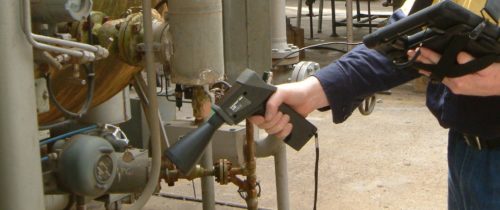11
The OSHA (Occupational Safety and Health Administration) sets detailed guidelines for industrial plants to abide by in order to keep the working environment safe. Plants must have certain programs or committees in place to ensure these guidelines are met. If they are not met, the OSHA will issue the plant a citation. Furthermore, and more importantly, the health and safety of the plant’s employees could be at risk if the enforced requirements are not met. An essential aspect of the Compliance Guidelines is Mechanical Integrity; therefore, industrial plants must have Mechanical Integrity Programs in place.
In the OSHA Compliance Guidelines, it states “Equipment used to process, store, or handle highly hazardous chemicals needs to be designed, constructed, installed and maintained to minimize the risk of releases of such chemicals. This requires that a mechanical integrity program be in place to assure the continued integrity of process equipment.”
Every effective program starts with a plan. The plant’s Supervisor will likely gather a few expert employees to assist in developing an execution plan to meet the mechanical integrity requirements. This plan needs to include step by step documentation as to how it will accomplish the below requirements. Plus, if and when a representative from the OSHA stops by, he/she will need to see the plant’s documentation to ensure the proper precautions have been taken.
Each piece of equipment used in the Mechanical Integrity Program needs to be compiled and categorized. For example, pressure vessels, storage tanks, process piping, fire protection system components, emergency shutdown systems, alarms, and pumps. This will simplify the program, enabling employers and employees to be on the same page with which equipment is used for a specific program.
Next, the plant must ensure each piece of equipment is in accordance with OSHA codes and standards. The failure to meet said codes and standards will once again risk citations and the health and safety of those operating the equipment, or even everyone within the plant.
 This step specifies each employee’s responsibilities in maintaining equipment. Maintenance tasks should be documented as well.
This step specifies each employee’s responsibilities in maintaining equipment. Maintenance tasks should be documented as well.
Procedures must be documented to allow each employee to be aware of their duties and responsibilities within the Mechanical Integrity Program.
Obviously, the employees are critical to the execution of the Mechanical Integrity Program. Employees must be trained on health and safety standards. They need to know how to manage equipment and how to handle hazardous materials. After all, the plant’s employees are the wheels that make the bus go. Equipment can be monitored and inspected, but who is in charge of those things?
It’s important to realize the extreme importance of conducting routine inspections on plant equipment. Many inspection responsibilities can be done systematically thanks to today’s innovative technology; however, supervisors still need to confirm with the human eye that systems and equipment are operating correctly.
If by chance a piece of equipment is not operating correctly, or adequately, it needs to be fixed or upgraded. Mechanical Integrity Programs result in trickle down procedures. The management system, training, inspections…all rely on each other to guarantee the health and safety of a plant. This step requires deficiencies determined as a result of an inspection to be corrected.
Lastly, the QA Program exists to routinely monitor equipment to make sure the proper materials of construction are used, fabrication and inspection procedures are proper, and that installation procedures recognize field installation concerns (per the OSHA guidelines). Each plant will likely have a number of workers in which Quality Assurance is their specific job.
Frazier Reliability Solutions has over 35 years of experience auditing, assessing, developing and improving Mechanical Integrity Programs. If you have processes at your facility that are covered by OSHA 1910 and you struggle with the complexity of the Mechanical Integrity requirements, please contact us. We can help.